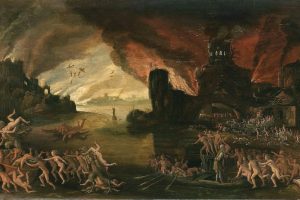The church can take a long time to approve a Marian apparition. In 2010, when Bishop David Ricken of the Diocese of Green Bay, Wisconsin, announced the apparitions given to Adele Brise in 1859 were “worthy of belief,” it capped a process that took 150 years to complete.
The earliest approved Marian apparition occurred during Mary’s lifetime, to St. James the Great while he was on a missionary trip in Spain. In this vision, Mary encouraged James to return to Jerusalem. The apparition went unapproved for more than 1,500 years—it was considered more or less pious legend—until 1723, when it was officially investigated, and Pope Innocent XIII granted it papal approval.
One of the commonalities of the three Abrahamic religious traditions—Judaism, Christianity, and Islam—is that their followers believe God revealed these religions to humans. In the case of Christianity, Catholics believe the definitive universal revelation of God to humans was in Jesus Christ and that the era of public revelation closed at the death of the last apostle directly chosen by Jesus himself (commonly believed to be James’ younger brother, John). As the Second Vatican Council, in its document on divine revelation, Dei Verbum, put it, “The Christian dispensation, therefore, as the new and definitive covenant, will never pass away and we now await no further new public revelation before the glorious manifestation of our Lord Jesus Christ [in his Second Coming].”
Nonetheless, the church believes God allows angels and saints, especially Mary, to assist Christians in their faith. On occasion, God may allow Mary—and sometimes other saints, such as the ones who spoke to Joan of Arc—to appear to Christians and give messages. These messages are not new public revelation but private revelation.
The nature of this type of revelation as private, given to select individuals, means the contents of such revelations aren’t considered binding upon anyone except the individuals who receive the messages. Even in these cases, if church leaders determine that the apparition was not an authentic manifestation sent by God, the recipients of the revelation need not believe it.
Approval of apparitions means simply that Catholics may believe that the event occurred and that the messages don’t contradict the Catholic faith. But because these heavenly signs aren’t public revelation, Catholics aren’t required to believe.
This article also appears in the May 2024 issue of U.S. Catholic (Vol. 89, No. 5, page 49). Click here to subscribe to the magazine.
Image: Wikimedia Commons/Oktobersonne (CC BY-SA 4.0). Pilgrims gather at the site of a claimed Marian apparition in Marpingen, Germany.













Add comment